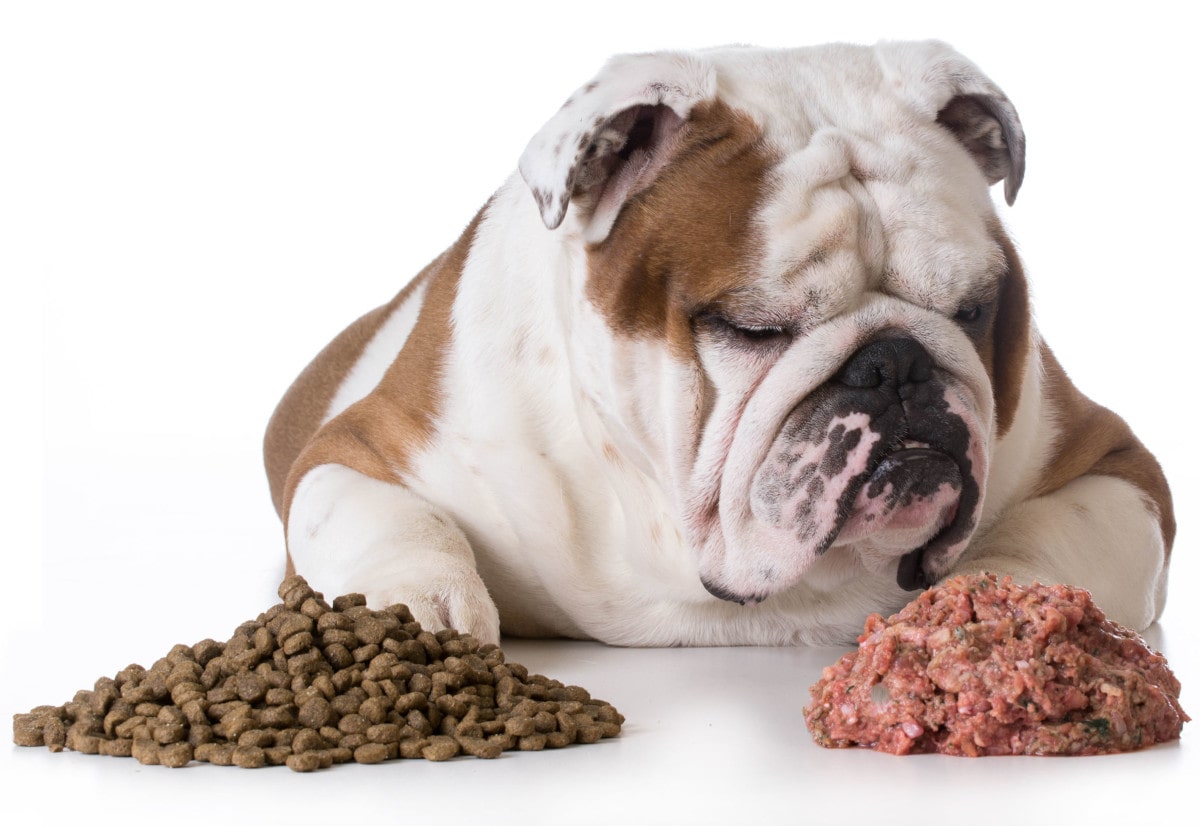There has been a major debate the last few years about what is best to feed your dog. Should you feed them raw? Should you feed them kibble or should you feed your pup canned food? It’s a heated topic with mixed views from all sides. Before we dive in, let’s discuss what raw food really is.
What is Raw Food?
Raw food or the B.A.R.F. Diet consists of uncooked, all-natural meats, bones, vegetables, fruits, and supplements. This ‘Biologically Appropriate Raw Food’ diet was founded by the veterinarian and nutritionist Dr. Ian Billinghurst in order to provide canines with the best diet suited for their biological makeup. It is designed to give your dog the best and freshest nutrients and vitamins it would find naturally in the wild.
But is the B.A.R.F. diet actually good for your furry friend?
Possibly, but before we get into the pros and cons of the B.A.R.F. diet, let’s investigate a little history.
History of Dog Food
You may be surprised to know that commercial dog food is a fairly recent invention. Back before the motor car and New York City, dogs were fed whatever humans had available. Table scraps, meat, and whatever they foraged for themselves was a canine’s staple diet. However, the debate on what to feed dogs has been ongoing since 2000 BCE when Roman poet and Philosopher Marcus Terentius Varror recommended feeding dogs a diet of meat, bones, and barley soaked in milk.
As dogs grew to become companion animals instead of livestock, opinions about their diets continued to change. European royalty decreed that a dog must eat a proper diet. No raw meat. Barley, grains, even liquor was added to the list of what a canine should eat. It wasn’t until the Industrial Revolution and WWII that kibble became the standard. A process called rendering, took the waste and byproducts of food that humans couldn’t consume and heated it to become a dry dog biscuit that could sit on shelves for months.
A huge movement pushed for consumers to purchase this convenient product. Kibble became the gold standard for canines while the idea of feeding dogs all-natural diets all but vanished. However, in recent years, proponents for the B.A.R.F. diet are fighting back.
The Pros and Cons of Raw Diets
So, is an all-natural diet really good for your dog? After researching several articles and documents on the topic, here’s what we’ve found.
Cons:
~ Human and Canine Pathogens. Raw diets have been known to carry human and canine pathogens including Salmonella, Campylobacter, Escherichia coli O157:H7, and many others. If raw food is not properly prepared, it can be a huge risk, especially for young children and the elderly.
~ More Fatal Diseases. Other pathogens like Neospora caninum (in raw beef), Nanophyetus salmincola (found in raw salmon) and Trichinella spiralis (in raw pork and wild game like deer, elk, and moose) all can be fatal or make your dog very sick.
~ Feeding Hazard. Bones can cause choking, intestinal blockage, or perforations, and chipped or broken teeth.
~ Expensive & Time Consuming. Preparing raw meat daily can rack up the bills instead of grabbing a 50 lb bag at the pet store that lasts for months. Also, raw veggies are hard for a dog to digest so often need to be blended down or cut to size.
~ Research? Very little scientific research to back up claims.
~ Tummy Problems. When a pup grows up on kibble, their system gets used to this diet. Changing this routine without proper preparation can shock their system
Pros:
~ Control. You have more control over what your dog eats and where it comes from. You know what’s going in their stomach every day. Also, there have been a large number of food recalls from major pet industries in the last few years which is concerning.
~ Less Chewing. With meaty bones, raw diets can be a natural outlet for the most stubborn of chewers.
~ Better Hygiene. Chewing on those meaty bones also work against the plaque build up that occurs every day. This can help prevent your pup from becoming part of the 80% of dogs with gum disease.
~ Better Taste. Having a different selection of raw meat every day probably tastes a lot better than the same small brown pellets from kibble. Many pets prefer this fresh taste.
~ All Natural. Kibble undergoes a high heat and pressure process to achieve its shape and longevity. Raw diets provide vital nutrients and live enzymes in their natural form.
~ Preparation. There are some measures that can be taken to get rid of a lot of the bacteria (freezing the meat, preparing and cleaning, etc).
The FDA, AVMA, and AAHA all recommend that you DO NOT feed your dogs a raw diet because of the health concerns involved. Still, others state that such organizations are doing their best to play it safe and may be over-exaggerating.
The Truth About Raw Diets
The honest truth is there hasn’t been a ton of research done on the topic. If you’re considering feeding your dog a raw diet, make sure to research it thoroughly. Know the pros and cons and don’t dive in blind. It could hurt your beloved pet. Also, talk to your veterinarian. They’ll be able to give you good recommendations for what’s appropriate for your dog.
